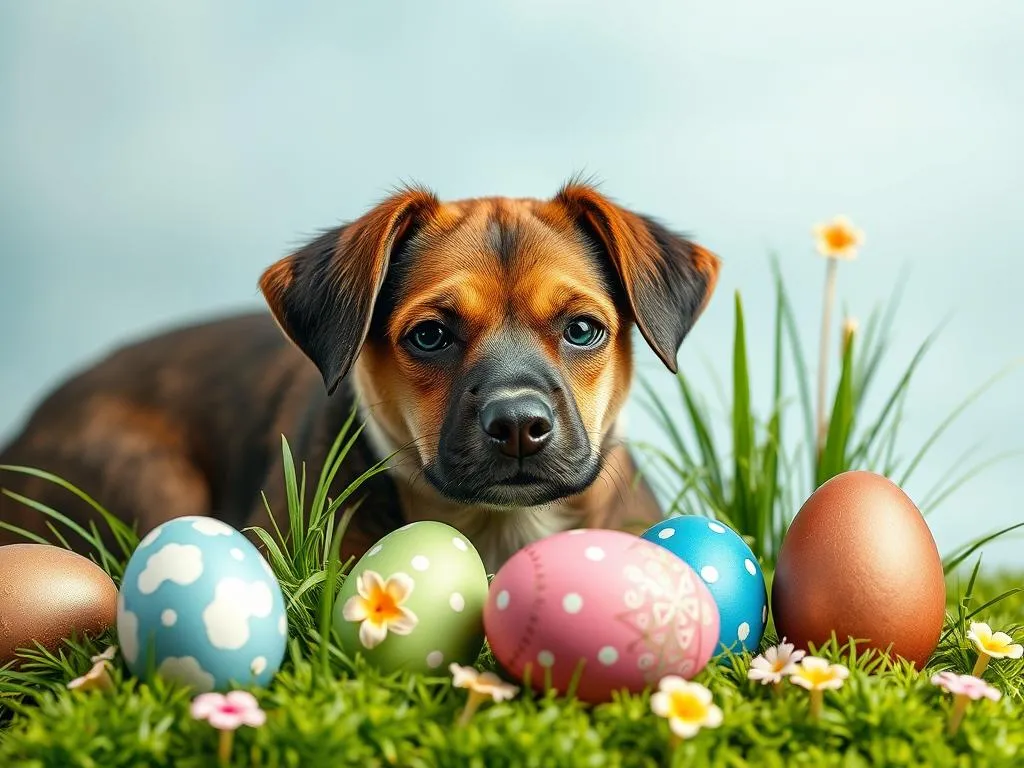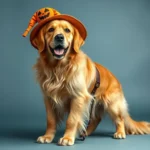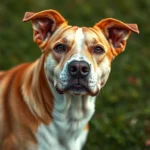
Easter eggs for dogs have become increasingly popular as pet owners look for ways to include their furry friends in holiday celebrations. As people increasingly see their pets as family members, the idea of incorporating festive activities for dogs has taken off. This article delves into everything you need to know about Easter eggs for dogs, from types to safety considerations, and how to plan a delightful egg hunt.
Understanding Easter Eggs for Dogs
What are Easter eggs for dogs?
Easter eggs for dogs are specially designed treats or toys inspired by the traditional Easter egg concept. Unlike regular Easter eggs, which are often made of chocolate and other harmful ingredients for dogs, these pet-friendly alternatives are safe and healthy. They can come in various forms, including edible treats shaped like eggs or non-edible toys filled with goodies.
Benefits of Easter eggs for dogs
Incorporating Easter eggs for dogs into your pet’s holiday celebration brings several benefits:
- Mental stimulation and enrichment: Dogs thrive on challenges. Searching for hidden treats engages their minds and keeps them entertained.
- Opportunities for bonding: Participating in activities like egg hunts can strengthen the bond between you and your dog, creating lasting memories.
- Encouragement of physical activity: An egg hunt encourages dogs to run, sniff, and explore, promoting physical health and well-being.
Types of Easter Eggs for Dogs
Edible Easter eggs
Edible Easter eggs for dogs are a delightful way to treat your pet. These treats are often made with dog-friendly ingredients such as:
- Peanut butter: A popular flavor many dogs love.
- Pumpkin: Great for digestion and a healthy choice.
- Carrots and sweet potatoes: Nutritious and sweet options that dogs enjoy.
You can find these treats at pet stores or make your own using simple recipes.
Non-edible Easter eggs
Non-edible Easter eggs for dogs are typically toys designed to be filled with treats. They come in various sizes and materials, suitable for different breeds and chewing habits. Look for durable options that can withstand vigorous play. Some popular types include:
- Puzzle toys: These require dogs to solve a challenge to access the treats inside.
- Stuffable toys: These can be filled with soft treats or peanut butter, providing hours of entertainment.
DIY Easter eggs
For a personal touch, consider making your own Easter eggs for dogs. Here’s how:
- Choose your materials: Use non-toxic plastic eggs or even hollowed-out vegetables like bell peppers.
- Fill them up: Use dog-friendly treats, kibble, or freeze-dried meat.
- Decorate: If you’re using plastic eggs, you can decorate them with non-toxic paint or stickers.
This creative activity allows for customization and can be a fun project to do with your kids!
Planning an Easter Egg Hunt for Dogs
Choosing the right location
When planning an egg hunt, the location can significantly affect the experience. Consider the following:
- Indoor vs. outdoor: If the weather permits, an outdoor hunt can be more exciting. However, if it’s rainy or too cold, an indoor hunt works well too.
- Safety tips: Ensure the area is free of hazards such as sharp objects, toxic plants, or other animals that may disrupt the hunt.
Setting up the hunt
To ensure a successful egg hunt, here are some tips for setting up:
- Hide eggs strategically: Place them in various locations, ensuring some are easy to find while others provide more of a challenge.
- Use scent trails: If your dog is having difficulty, you can create a scent trail leading to the eggs. Simply rub a treat on the ground or leave a few pieces along the way.
Supervising the hunt
During the egg hunt, supervision is crucial. Keep an eye on your dog to ensure they are not consuming anything harmful or engaging in disputes over eggs. If you have multiple dogs, be prepared to intervene if necessary to prevent any disagreements.
Safety Considerations
Choosing safe materials
When selecting Easter eggs for dogs, prioritize safety:
- Non-toxic materials: Ensure that toys and treats are made from safe, dog-friendly materials.
- Avoid choking hazards: Choose eggs that are appropriately sized for your dog and avoid small parts that could be swallowed.
Recognizing food allergies
Be aware of your dog’s dietary restrictions. Common allergens include:
- Wheat: Some dogs may have sensitivities to grains.
- Dairy: Many dogs are lactose intolerant.
- Chicken or beef: Some dogs might have allergies to specific proteins.
Always monitor your dog for signs of an allergic reaction, such as itching, swelling, or gastrointestinal issues.
Supervision during play
While dogs enjoy their Easter eggs, it’s essential to supervise playtime. This ensures they don’t accidentally ingest parts of the toys or treats that could pose a risk.
Enhancing the Experience
Incorporating themed activities
Make your dog’s Easter celebration even more festive by incorporating themed activities:
- Bunny hop races: Organize a fun race where dogs can compete in a bunny hop style, adding excitement to the day.
- Easter costumes: Dress your dog in adorable bunny ears or themed outfits to capture the spirit of the holiday.
Creating photo opportunities
Capture the fun moments during the egg hunt with these tips:
- Find the perfect backdrop: Use colorful decorations or a beautiful outdoor setting for photos.
- Engage with your dog: Use treats or toys to get your dog’s attention while snapping pictures.
Don’t forget to share your adorable pictures on social media, tagging friends and family!
Engaging with the community
Consider organizing a neighborhood dog egg hunt. It can be a fun way to celebrate Easter while fostering community spirit. You can also look for local pet-friendly events that allow dogs to join in on the festivities.
Post-Hunt Care
Clearing up the area
After the egg hunt, it’s important to clean up the area thoroughly. This prevents any ingestion of harmful materials, such as plastic pieces from broken eggs or leftover treats.
Treating your dog after the activity
After a fun-filled day, reward your dog with a special treat or extra cuddles. Hydration is essential, so ensure they have access to fresh water. Allow your dog to rest and recuperate after the excitement.
Reflecting on the experience
Once the festivities are over, take a moment to reflect on the day. Consider what worked well and what could be improved for next year. Sharing your experiences with fellow dog owners can also provide valuable insights and ideas for future celebrations.
Conclusion
Incorporating Easter eggs for dogs into your holiday festivities can enhance the experience for both you and your furry friend. From the mental stimulation of egg hunts to the joy of sharing treats, there are countless ways to celebrate this special occasion with your pet. So, gather those Easter eggs, plan a fun day, and create cherished memories together!









